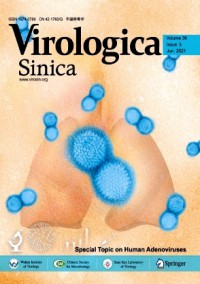
发表咨询:400-808-1731
订阅咨询:400-808-1751
中国病毒学杂志 SCI期刊 CSCD期刊 统计源期刊
Virologica Sinica
- 42-1760/Q 国内刊号
- 1674-0769 国际刊号
- 0.6 影响因子
- 1-3个月下单 审稿周期
-
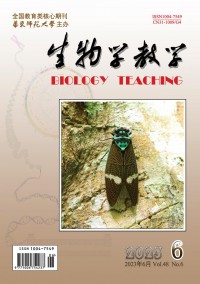
生物学教学
部级期刊
影响因子 0.48
人气 12707
-

基因组学与应用生物学
北大期刊
影响因子 1.11
人气 9291
-

中学生物学
省级期刊
影响因子 0.24
人气 8448
-
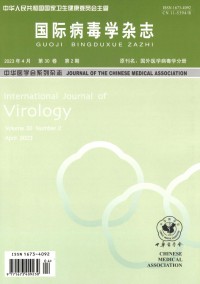
国际病毒学
统计源期刊
影响因子 1.3
人气 4021
-
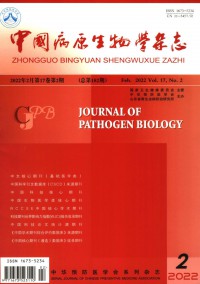
中国病原生物学
北大期刊
影响因子 1.32
人气 3087
-
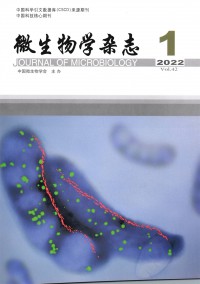
微生物学
CSCD期刊
影响因子 1.29
人气 2841
-
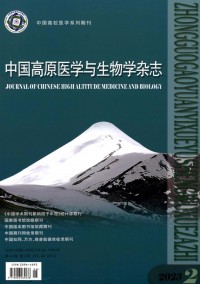
中国高原医学与生物学
省级期刊
影响因子 0.26
人气 2505
-

中国细胞生物学学报
CSCD期刊
影响因子 0.52
人气 1603
-
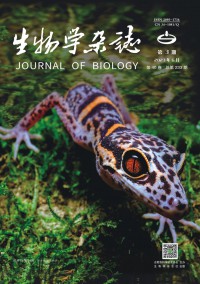
生物学
北大期刊
影响因子 0.83
人气 1493
-
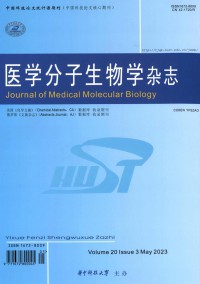
医学分子生物学
统计源期刊
影响因子 0.62
人气 1325
中国病毒学 2015年第06期杂志 文档列表
- 中国病毒学杂志REVIEW
-
RNA chaperones encoded by RNA viruses401-409
摘要:RNAs are functionally diverse macromolecules whose proper functions rely strictly upon their correct tertiary structures. However, because of their high structural flexibility, correct folding of RNAs is challenging and slow. Therefore, cells and viruses encode a variety of RNA remodeling proteins, including helicases and RNA chaperones. In RNA viruses, these proteins are believed to play pivotal roles in all the processes involving viral RNAs during the life cycle. RNA helicases have been studied extensively for decades, whereas RNA chaperones, particularly virus-encoded RNA chaperones, are often overlooked. This review describes the activities of RNA chaperones encoded by RNA viruses, particularly the ones identified and characterized in recent years, and the functions of these proteins in different steps of viral life cycles, and presents an overview of this unique group of proteins.
- 中国病毒学杂志RESEARCH ARTICLE
-
Application of an M13 bacteriophage displaying tyrosine on the surface for detection of Fe3+ and Fe2+ ions410-416
摘要:Ferric and ferrous ion plays critical roles in bioprocesses,their influences in many fields have not been fully explored due to the lack of methods for quantification of ferric and ferrous ions in biological system or complex matrix.In this study,an M13 bacteriophage(phage) was engineered for use as a sensor for ferric and ferrous ions via the display of a tyrosine residue on the P8 coat protein.The interaction between the specific phenol group of tyrosine and Fe3+./ Fe2+.was used as the sensor.Transmission electron microscopy showed aggregation of the tyrosine-displaying phages after incubation with Fe3+ and Fe2+.The aggregated phages infected the host bacterium inefficiently.This phenomenon could be utilized for detection of ferric and ferrous ions.For ferric ions,a calibration curve ranging from 200 nmol/L to 8 μmol/L with a detection limit of 58 nmol/L was acquired.For ferrous ions,a calibration curve ranging from 800 nmol/L to 8μmol/L with a detection limit of 641.7 nmol/L was acquired.The assay was specific for Fe(3+) and Fe(2+) when tested against Ni2+,Pb2+,Zn2+,Mn2+,Co2+,Ca2+,Cu2+,Cr3+,Ba2+,and K+.The tyrosine displaying phage to Fe3+ and Fe2+ interaction would have plenty of room in application to biomatenals and bionanotechnology.
-
Genome sequencing and analysis of a granulovirus isolated from the Asiatic rice leafroller, Cnaphalocrocis medinalis417-424
摘要:The complete genome of Cnaphalocrocis medinalis granulovirus(CnmeGV) from a serious migratory rice pest, Cnaphalocrocis medinalis(Lepidoptera: Pyralidae), was sequenced using the Roche 454 Genome Sequencer FLX system(GS FLX) with shotgun strategy and assembled by Roche GS De Novo assembler software. Its circular double-stranded genome is 111,246 bp in size with a high A+T content of 64.8% and codes for 118 putative open reading frames(ORFs). It contains 37 conserved baculovirus core ORFs, 13 unique ORFs, 26 ORFs that were found in all Lepidoptera baculoviruses and 42 common ORFs. The analysis of nucleotide sequence repeats revealed that the CnmeGV genome differs from the rest of sequenced GVs by a 23 kb and a 17 kb gene block inversions, and does not contain any typical homologous region(hr) except for a region of non-hr-like sequence. Chitinase and cathepsin genes, which are reported to have major roles in the liquefaction of the hosts, were not found in the CnmeGV genome, which explains why CnmeGV infected insects do not show the phenotype of typical liquefaction. Phylogenetic analysis,based on the 37 core baculovirus genes, indicates that CnmeGV is closely related to Adoxophyes orana granulovirus. The genome analysis would contribute to the functional research of CnmeGV,and would benefit to the utilization of CnmeGV as pest control reagent for rice production.
-
Cloning, expression, and antiviral activity of interferon β from the Chinese microbat, Myotis davidii425-432
摘要:Bats are natural reservoir hosts for many viruses that produce no clinical symptoms in bats.Therefore, bats may have evolved effective mechanisms to control viral replication. However, little information is available on bat immune responses to viral infection. Type I interferon(IFN) plays a key role in controlling viral infections. In this study, we report the cloning, expression, and biological activity of interferon β(IFNβ) from the Chinese microbat species, Myotis davidii. We demonstrated the upregulation of IFNB and IFN-stimulated genes in a kidney cell line derived from M. davidii after treatment with poly I:C or infection with Sendai virus. Furthermore, the recombinant IFNβ inhibited vesicular stomatitis virus and bat adenovirus replication in cell lines from two bat species, M. davidii and Rhinolophus sinicus. We provide the first in vitro evidence of IFNβ antiviral activity in microbats, which has important implications for virus interactions with these hosts.
-
Conserved termini and adjacent variable region of Twortlikevirus Staphylococcus phages433-440
摘要:Methicillin-resistant Staphylococcus aureus(MRSA) is an increasing cause of serious infection,both in the community and hospital settings. Despite sophisticated strategies and efforts, the antibiotic options for treating MRSA infection are narrowing because of the limited number of newly developed antimicrobials. Here, four newly-isolated MRSA-virulent phages, IME-SA1, IMESA2, IME-SA118 and IME-SA119, were sequenced and analyzed. Their genome termini were identified using our previously proposed "termini analysis theory". We provide evidence that remarkable conserved terminus sequences are found in IME-SA1/2/118/119, and, moreover, are widespread throughout Twortlikevirus Staphylococcus phage G1 and K species. Results also suggested that each phage of the two species has conserved 5′ terminus while the 3′ terminus is variable. More importantly, a variable region with a specific pattern was found to be present near the conserved terminus of Twortlikevirus S. phage G1 species. The clone with the longest variable region had variable terminus lengths in successive generations, while the clones with the shortest variable region and with the average length variable region maintained the same terminal length as themselves during successive generations. IME-SA1 bacterial infection experiments showed that the variation is not derived from adaptation of the phage to different host strains. This is the first study of the conserved terminus and variable region of Twortlikevirus S. phages.
-
HIV-1 Vpr protein activates the NF-κB pathway to promote G2/M cell cycle arrest441-448
摘要:Viral protein R(Vpr) plays an important role in the replication and pathogenesis of Human immunodeficiency virus type 1(HIV-1). Some of the various functions attributed to Vpr, including the induction of G2/M cell cycle arrest, activating the NF-κB pathway, and promoting viral reverse transcription, might be interrelated. To test this hypothesis, a panel of Vpr mutants were investigated for their ability to induce G2/M arrest and to activate the NF-κB pathway. The results showed that the Vpr mutants that failed to activate NF-κB also lost the activity to induce G2/M arrest, which suggests that inducing G2/M arrest via Vpr depends at least partially on the activation of NF-κB. This latter possibility is supported by data showing that knocking down the key factors in the NF-κB pathway – p65, Rel B, IKKα, or IKKβ– partially rescued the G2/M arrest induced by Vpr.Our results suggest that the NF-κB pathway is probably involved in Vpr-induced G2/M cell cycle arrest.
-
N-terminal residues of an HIV-1 gp41 membrane-proximal external region antigen influence broadly neutralizing 2F5-like antibodies449-456
摘要:The Human immunodeficiency virus type 1(HIV-1) gp41 membrane proximal external region(MPER) is targeted by broadly neutralizing antibodies(e.g. 2F5, 4E10, Z13 e and m66.6), which makes this region a promising target for vaccine design. One strategy to elicit neutralizing antibodies against the MPER epitope is to design peptide immunogens mimicking neutralization structures. To probe 2F5-like neutralizing antibodies, two yeast-displayed antibody libraries from peripheral blood mononuclear cells from a HIV-1 patient were screened against the 2F5 epitope peptide SP62. Two 2F5-like antibodies were identified that specifically recognized SP62. However,these antibodies only weakly neutralized HIV-1 primary isolates. The epitopes recognized by these two 2F5-like antibodies include not only the 2F5 epitope(amino acids(aa) 662–667 in the MPER)but also several other residues(aa 652–655) locating at the N-terminus in SP62. Experimental results suggest that residues of SP62 adjacent to the 2F5 epitope influence the response of broadly neutralizing 2F5-like antibodies in vaccination. Our findings may aid the design of vaccine immunogens and development of therapeutics against HIV-1 infection.
- 中国病毒学杂志LETTER
-
Morphological diversity of cultured cold-active lytic bacteriophages isolated from the Napahai plateau wetland in China457-459
-
Epidemiological study and variation analysis of the porcine kobuvirus 3D gene in Sichuan province, China460-463
-
Molecular characterization of DENV-3 circulating during the post-monsoon period of 2013–14 in Delhi, India464-469
-
Molecular characterization of chikungunya virus from three regions of Cameroon470-473
-
2015 Reviewer Acknowledgment474-477
-
Copyright478-
-
Virologica Sinica479-